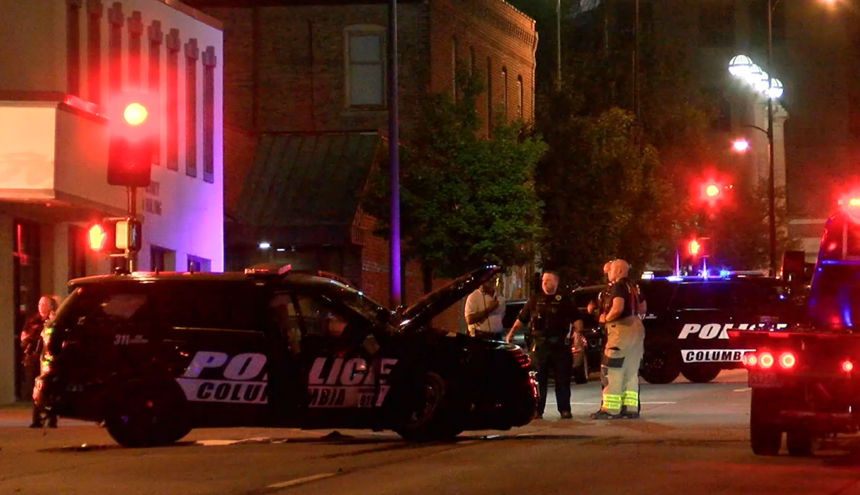‘Use caution:’ Police weigh risks, benefits of speed when responding to crime scenes

COLUMBIA, Mo. (KMIZ)
Two Columbia police patrol vehicles collided while responding to a deadly shooting at Douglass Park on Aug. 25.
The two vehicles crashed at the intersection of Walnut Street and Sixth Street in front of the Columbia police department.
According to a crash report, one of the patrol vehicles was traveling 63 mph when the two collided and the other driver's view was obstructed by a building and vehicle. Both police cruisers had their emergency lights on and sirens activated.
It's not clear whether any officers were disciplined or violated policy in relation to the crash because that information is confidential. However, the crash sheds light on the training provided to officers and what disciplinary actions can be taken if officers break the rules.
Lt. Lance Bolinger with the Columbia Police Department said officers continually take training on emergency driving and driving defensively to prevent these types of things from happening.
"One of the highest liability things we do is just driving a car every day," Bolinger said.
Officers begin training by riding with a field training officer for several weeks or months to see how they operate the vehicles.
"I still remember them telling me, 'You have a responsibility when you come to these intersections to slow down, use caution. We have a responsibility to the public,'" he said. "And I remember that statement just as clear as day, and I think they're probably the most instrumental part of our driving training."
Officers also get training on a closed course both in the academy and every two years within the department.
Tim Maher is a professor at the University of Missouri St. Louis Department of Criminology and Criminal Justice and a former police officer.
"More training is always better, you know, and some officers might need it more than others," Maher said.
Bolinger said there are no hard and fast rules for officers on the best way to drive or top speeds while responding to calls. Officers must weigh the risk of emergency driving versus the benefit of getting to a call earlier.
"If you have an active shooter at a high school, we still have to be able to get there quickly but that's probably going to be something where people take a lot more risk in their driving capabilities whereas if you had like a silent hold up alarm at a bank, again that could just be an accidental alarm, it could be a bank robbery going on, we don't know," Bolinger said.
Maher said it is not uncommon for departments to have policies similar to CPD's.
"It's because responding to a call, emergency or non-emergency, all the circumstances are unique and I don't think you could write a policy that could incorporate all the conditions that an officer might face," he said.
Maher said outside of different factors such as the time of day, weather conditions and speed limits, officers also to be on the lookout for other drivers on the road.
"Unfortunately the public doesn't always respond how they are supposed to respond. The idea is, you know, they're told to pull over to the right. Well, I've had people stop right in the middle of a four-way highway," he said.
Bolinger said officers also have to be on the lookout for other emergency vehicles, such as fire trucks and ambulances, which is why they are trained to drive defensively.
When an incident like the crash from August occurs, the department has a responsibility to do an internal review of the wreck. Either the traffic investigator or a road sergeant will do the initial investigation.
After the initial investigation, crashes go under an administrative review where supervisors will investigate which policies were followed and whether the officer was driving appropriately. Officers will then recommend whether corrective action should be taken.
That corrective discipline can range from coaching to re-training to a written reprimand or further disciplinary action.
Supervisors take many things into consideration when reviewing these wrecks.
Maher said supervisors such as sergeants are the first step to watching for any patterns of erratic driving, and different disciplinary action could be used depending on how often an officer is involved in wrecks or how experienced they are.
Both Maher and Bolinger said each situation is different and depends on what officers are responding to.
